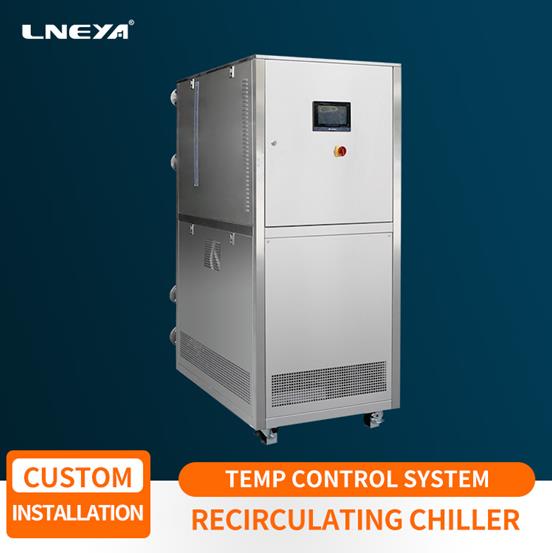What are the temperature control performance of laboratory recirculating chillers
The laboratory recirculating chiller is a
typical cooling circulator with heating function to ensure the repeatability of
laboratory results. There are water-cooled or air-cooled refrigerators, which
can be placed in a laboratory fume hood or set up for internal use.

1. The laboratory recirculation chiller
connects each configuration into a closed piping system. There is no inner
tank, no solenoid valve, and the heat transfer oil is circulated under the
power of the circulating pump to maximize the heating/cooling system. The
application that heat or cold is delivered to us—reactor.
2. The fundamental factor in the
temperature control of the laboratory recirculating chiller is not heating or
cooling, but the most likely transfer of the heat generated by the machine to
the application! !
3. The liquid circulation of the whole
system is airtight. The system is equipped with an expansion vessel. The
expansion vessel and the liquid circulation system are independent and do not
participate in the liquid circulation. They are only mechanically connected. No
matter whether the temperature of the liquid circulation is high or low, but
the expansion vessel The medium in is always room temperature.
4. Since the entire liquid cycle is a
closed system, there is no absorption of water vapor at low temperatures, and
no oil mist is produced at high temperatures. The heat transfer oil can have a
wide operating temperature, so the same machine and the same heat transfer
medium can achieve temperature control from -120 degrees to 200 degrees.
5. No mechanical and electronic valves are
used in the whole system.
6. The heat exchange area of the plate
heat exchanger of the laboratory recirculation chiller is very large, so the
heat exchange speed is very fast. And at high temperatures, it prevents the
heat transfer oil from being locally heated and cracked.
7. Automatically adjust IPD parameters
according to the requirements of the process, and automatically adjust the
power output to meet the requirements of temperature changes during the
reaction process, so as to accurately control the temperature of the reaction
process.
8. The controller adopts the touch screen,
the operation is very simple, it can display the set temperature of the working
process, the jacket temperature, the temperature change curve in the kettle
body, and can realize the program heating and cooling, which can be used as
needed.
9. A larger temperature difference between
the inside and outside of the jacket can be set according to the reliable requirements
provided by the glass reactor manufacturer. If the temperature difference
between the inside and outside reaches the value required by the manufacturer,
the instrument will automatically cut off the power to ensure that the reactor
will not be excessive due to the temperature difference. Big and cracked.
10. The pressure of the circulating pump of
the laboratory recirculation chiller can be adjusted, so that it can meet the
reliable pressure requirements of different reactor jackets and meet the
requirements of the reactor.
11. With remote fault diagnosis.
Summarize
The above is the summary of the temperature
control of the laboratory recirculating chiller. The refrigeration and heating
temperature control system is one of our main products of LNEYA. Global
consulting sales@lneya.com.
 LNEYA Industrial Chillers Manufacturer Supplier -
LNEYA Industrial Chillers Manufacturer Supplier -











